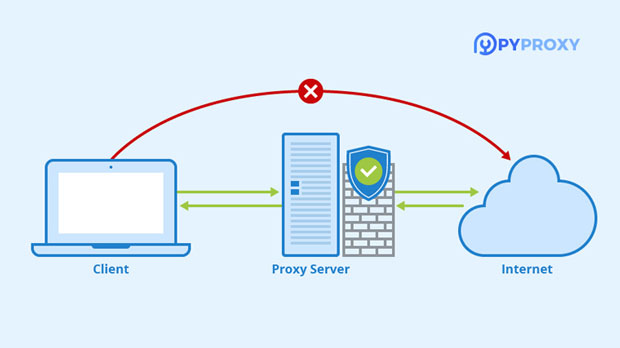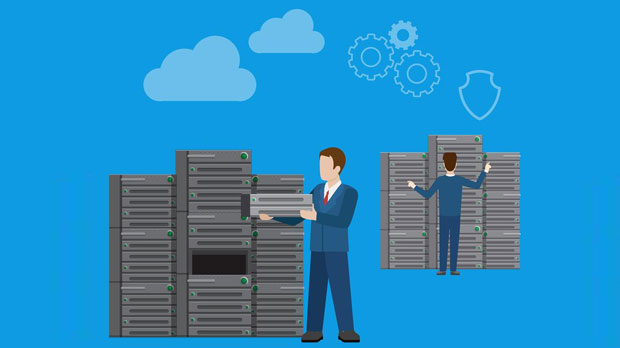In today’s digital landscape, the need for online privacy and anonymity has never been more crucial. sock s5 proxies offer one of the most reliable ways to mask users' identities while browsing the internet. However, not all Socks5 proxies provide the same level of anonymity. Determining the level of anonymity offered by a socks5 proxy is essential for users who wish to maintain different privacy standards depending on their online activities. In this article, we will explore the key factors that help determine the anonymity level of Socks5 proxies and provide a comprehensive understanding of how to assess them. Understanding Socks5 ProxiesSocks5 proxies are a popular choice for users who seek to route their internet traffic through an intermediary server, masking their real IP address. Unlike HTTP proxies, which only work for web browsing, Socks5 proxies can handle any type of internet traffic, including P2P, FTP, and others. This versatility makes them more secure and reliable for anonymity.When users connect to a Socks5 proxy, their data is transmitted through the proxy server, which changes the IP address seen by websites and services. However, this does not inherently guarantee anonymity. It is crucial to assess the specific features and behaviors of a Socks5 proxy to determine its anonymity level.What are the Anonymity Levels of Socks5 Proxies?Socks5 proxies can generally be categorized into three main anonymity levels: transparent, anonymous, and high anonymity. Understanding the differences between these categories helps users decide which type of Socks5 proxy best suits their needs.1. Transparent ProxiesTransparent Socks5 proxies are the least anonymous. As the name suggests, they do not hide the user's identity effectively. In fact, these proxies do not even attempt to conceal the original IP address. Websites and services can easily detect that a proxy is being used, and the real IP address of the user can often be retrieved. Furthermore, the proxy will typically forward the "X-Forwarded-For" header, which explicitly reveals the user's original IP address.Transparent proxies are usually deployed in environments where anonymity is not a priority, such as network load balancing or for accessing certain content with minimal restrictions. While they do provide some benefits in terms of IP masking, their lack of true anonymity makes them unsuitable for users looking to maintain their privacy.2. Anonymous ProxiesAnonymous Socks5 proxies offer a higher level of privacy compared to transparent proxies. These proxies hide the user's real IP address, preventing websites from easily detecting that a proxy is being used. However, unlike high anonymity proxies, they still send a few pieces of identifying information along with the traffic, such as the type of proxy used.The key feature of anonymous Socks5 proxies is that they do not reveal the original IP address of the user, but they do not provide complete protection against all forms of identification. For example, some websites may be able to detect that the traffic is coming from a proxy server, even if they cannot see the real IP address. This makes anonymous proxies suitable for users who need to avoid basic tracking methods but are not highly concerned with advanced forms of tracking or surveillance.3. High Anonymity Proxies (Elite Proxies)High anonymity Socks5 proxies, often referred to as elite proxies, provide the highest level of privacy and security. These proxies completely conceal the user's real IP address and do not reveal any information about the use of a proxy. Websites and services are unable to detect the presence of a proxy server, making it almost impossible to trace back to the user's original location.High anonymity proxies are ideal for individuals who require top-tier privacy protection, such as those engaging in sensitive activities like political activism, whistleblowing, or avoiding government surveillance. These proxies offer the best protection against online tracking, fingerprinting, and other forms of data collection, ensuring that the user’s activities remain private.Factors Affecting the Anonymity of Socks5 ProxiesTo determine the exact level of anonymity a Socks5 proxy provides, it is essential to consider several factors that influence the proxy's behavior and how it interacts with websites. Below are the key elements to evaluate:1. Headers and MetadataOne of the first ways to assess the anonymity of a Socks5 proxy is by analyzing the headers and metadata it forwards. A proxy that sends additional information, such as the original IP address (e.g., through the "X-Forwarded-For" header), can be easily detected by websites and thus does not provide a high level of anonymity.Transparent proxies will typically forward this type of metadata, while anonymous proxies may still send certain headers that reveal proxy usage, albeit without exposing the original IP. High anonymity proxies, on the other hand, minimize the amount of information forwarded, ensuring that websites cannot detect the use of a proxy or identify the user’s real IP address.2. IP Address and Geo-locationThe IP address of the proxy server plays a significant role in determining the level of anonymity. If a Socks5 proxy uses a server located in a specific country, it may be vulnerable to geo-location tracking. Furthermore, if the proxy's IP address is known or associated with a specific provider, it may be easier for websites to identify that the traffic is coming from a proxy.High anonymity proxies usually use IP addresses that are less likely to be associated with known proxy providers, making it difficult for websites to pinpoint that the user is using a proxy server.3. DNS and WebRTC LeaksDNS and WebRTC leaks are common vulnerabilities that can expose a user's real IP address despite using a proxy. Some Socks5 proxies may not adequately handle DNS requests, which can leak the real IP address to websites. Similarly, WebRTC leaks, often associated with browsers like Chrome and Firefox, can also compromise anonymity.When choosing a Socks5 proxy, it is essential to verify whether the proxy offers protection against such leaks. High anonymity proxies typically have built-in measures to prevent these vulnerabilities.How to Test and Verify the Anonymity Level of Socks5 ProxiesTo accurately determine the level of anonymity a Socks5 proxy offers, users can perform several tests:1. IP and DNS Leak TestsThere are many online tools available that can test for IP and DNS leaks when using a proxy. These tools help identify whether your real IP address is being exposed due to a leak. A good Socks5 proxy should not reveal the real IP address during these tests.2. Proxy Detection TestsProxy detection websites can be used to determine whether a proxy is detectable. These tests check for common signs of proxy use, such as specific HTTP headers or inconsistencies in user-agent strings. High anonymity proxies should pass these tests without revealing the proxy usage.3. Manual ObservationUsers can also perform manual observation by accessing websites that display the real IP address and comparing it with the IP shown when using the Socks5 proxy. This is a simple method to check whether the proxy is effectively masking the user’s IP address.Determining the anonymity level of a Socks5 proxy is crucial for users seeking privacy protection online. Transparent proxies offer the least anonymity, while high anonymity (elite) proxies provide the best security and privacy. By understanding the different anonymity levels and evaluating factors such as headers, IP address, and potential leaks, users can select the right proxy for their needs. Performing tests and regularly checking the effectiveness of the proxy will further ensure that their online activities remain private.
Apr 15, 2025
![arrow]()



























































